Let’s Talk About Tofu (Part 2: Tofu Products)
How to Cook with Smoked, Dried, and Fried Tofu + 3 Mini Recipes
Hi! After receiving really warm feedback on my first tofu post on Substack, I’m thrilled to bring you part two! This time, we’re diving into some of the most common tofu products.
In Chinese cuisine, tofu varieties that are not fresh and plain are often called douzhipin (豆制品), meaning "soybean products." If you visit a tofu stall in a Chinese market, you'll find dozens of douzhipin, from pressed to fried tofu, and occasionally local delicacies like stinky tofu or molten lava tofu (baojiang doufu). The broad definition of soybean products encompasses both fermented varieties (like douchi or soy sauce) and non-fermented ones (like pressed tofu and tofu skin). Here, we’ll focus on the types you’re most likely to find in an Asian grocery store outside of China (though I can’t resist including fermented tofu curd!).
These tofu varieties are highly versatile, with chewy, pliable textures and dense nutrients. Dried tofu products also have a long shelf life, making them ideal pantry staples. They bring a rich, nutty flavor from the soybeans themselves and can be excellent meat substitutes. In many ways, they’re even easier to work with than fresh tofu. If you’re still marinating and pressing your tofu, these varieties will save you a lot of hassle.
Pressed Tofu
Doufu gan (豆腐干) or dougan (豆干), translated as "dry tofu," is a category of firm, pressed tofu that includes variations like smoked tofu, five-spice tofu, and pressed tofu sheets. This tofu is made by pressing out more water from fresh tofu, then flavoring it through methods like braising or smoking. The texture is similar to, or a bit denser than, extra-firm tofu.
Pressed tofu products are usually vacuum-sealed on the refrigerated shelf at Asian grocery stores. Look for varieties with minimal additives. All three types are ready-to-eat (although you can blanch them to remove any “bean-y” flavor) and can often be used interchangeably, especially smoked and five-spice tofu.
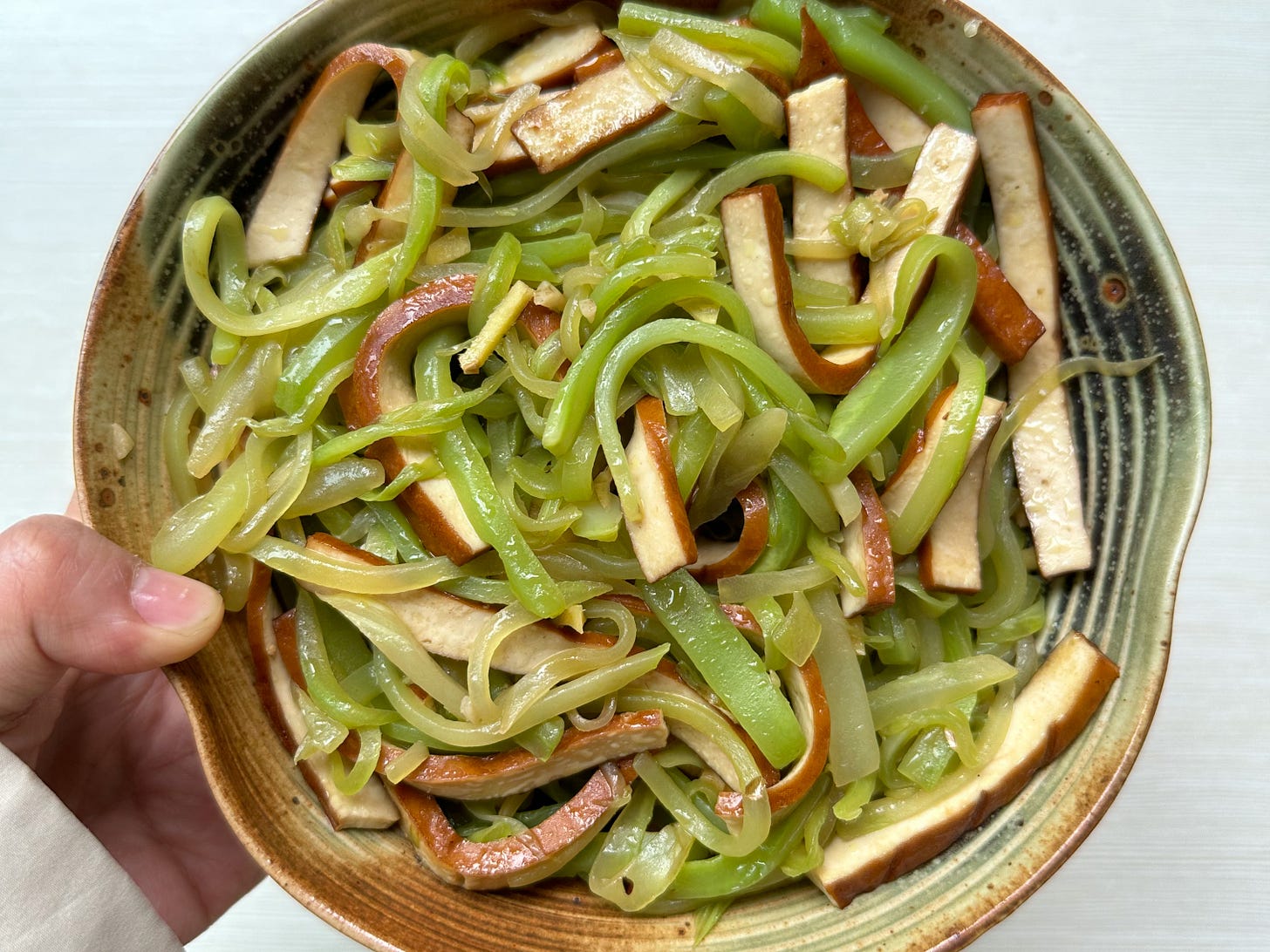
Smoked Tofu (烟熏豆腐干 Yanxun Doufugan)
Smoked tofu, abbreviated as xungan (熏干), is traditionally made by pressing water out of tofu and smoking it, often with pine wood shavings. This gives it a brown, firm skin, dense texture, and a smoky flavor. Some versions are also seasoned with soy sauce and spices or made with liquid smoke. Smoked tofu is one of the most common tofu products available in Germany and can even be found in regular grocery stores in the vegan food aisle.
Uses: Perfect for quick stir-fries with leafy greens (like garlic chives, garlic scapes, or bok choy) or crunchy veggies (such as celery or sugar snap peas). It also pairs well with pork belly or cured pork for added smokiness.
Recipe: Stir-Fried Smoked Tofu with Garlic Chives
Thinly slice 300g smoked tofu. In a wok, heat 1 tbsp oil over medium heat and fry the tofu slices until golden. Add 2 deseeded dried chilis and 100g garlic chives. Season with 1/4 tsp salt, or more to taste. (pictured below)
Five-Spice Tofu (五香豆腐干 Wuxiang Doufugan)
Five-spice tofu, or xianggan (香干), is firm tofu braised in Chinese five-spice and soy sauce (sometimes with tea leaves, too). This is also one of the mainstay of my fridge. It has a red-brown color and a slightly softer, bouncier texture than smoked tofu. Traditionally, it’s enjoyed in salads with seasonal wild greens like toon tree leaves (xiangchun) or Indian aster (malantou). In my local Asian stores, you’ll find it in thick squares, and occasionally in non-seasoned white versions, though the pre-seasoned variety is more popular. Five-spice tofu seasoned with mala or other flavors is often enjoyed as a snack, which I grew up loving.
Uses: Great as a snack, in cold appetizers and salads (for example this cucumber salad), quick stir-fries, or in veggie dumpling filling.
Recipe: Quick Five-Spice Tofu Salad
Cut 300g five-spice tofu into thin slices. Slice 1 red bell pepper into thin strips and roughly chop a handful of cilantro. In a large bowl, combine the tofu and vegetables. Add 1 tbsp soy sauce, 1/2 tbsp black vinegar, 1 tsp sesame oil, 1/2 tsp Sichuan pepper oil, and 2 tsp chili oil, then mix to combine.
Pressed Tofu Sheets (百叶 Baiye /千张 Qianzhang)
These thin, light-yellow tofu sheets, also known as hundred leaves or thousand layers, are sold stacked and folded in vacuum packages. They’re made by pouring coagulated soy milk into a mold in thin layers and pressing out most of the moisture to create high-protein sheets (about 20g protein per 100g).
How to prepare: Separate each sheet and slice into squares, thin ribbons, or broad strips. Blanch or soak in boiling water to soften the texture.
Uses: Ideal for stir-fries, salads, soups, braises, as wraps, or even as a low-carb noodle substitute.
Dried Tofu Skin (豆皮/腐竹)
Dried tofu skin, called fuzhu (腐竹) in Chinese and yuba in Japanese, is a thin, light-yellow sheet that forms on the surface of heated soy milk (similar to the skin on heated milk). This sheet is lifted, dried, and often sold in various shapes like sheets, knots, or sticks. Fuzhu has a chewy and flexible texture (depending on how long you cook it) that soaks up flavors well, making it perfect for broths and soups. It can also be softer if braised for a longer time. Fuzhu pairs really well with ingredients like wooden ear, shiitake mushrooms, beef and pork.
How to prepare: Soak in room-temperature or lukewarm water until fully rehydrated and pliable (this can take 1–6 hours, depending on thickness).
Uses: Dried tofu skin sheets can be used as wraps, while stems and knots work well in salads, soups, and stews.
Tip: Another hidden gem is deep-fried tofu skin rolls, known as xiangling (响铃), which are crispy and perfect for hot pot. They cook in just 10–20 seconds and soak up all the delicious broth.
Deep-Fried Tofu Puffs (油豆腐 Youdoufu / 豆腐泡 Doufupao)
Also called puffed tofu, these deep-fried tofu cubes have a porous, sponge-like texture from being fried in hot oil, which evaporates the water inside. They’re great for absorbing sauces and can be used as meat substitutes in dishes like Kung Pao Chicken or Pad Thai. You can also take out the filling and stuff with meat or other ingredients (Hakka stuffed tofu). I prefer the smaller cubes than a whole fried block as they have more holes inside.
Uses: Add directly to soups like hot pot, noodle soup, or even instant noodles. They’re also excellent in saucy stir-fries like this maple-soy glazed tofu, or try Kristina Cho’s honey seasme sauce.
Fermented Bean Curd (腐乳 Furu)
Fermented bean curd, or furu, is both a flavorful side dish and condiment in Chinese cuisine. The store-bought version comes in a jar with creamy tofu cubes and sauce, which has a consistency similar to soft cheese and a deeply umami, savory, and subtly sweet flavor. It’s made by first allowing white hairy mold to grow on firm tofu, then fermenting it with seasonings (see here). You’ll find different varieties depending on the region, including red (hong furu), white (bai furu), and spicy (la furu). Some was even added with rose petals to add fragrance.
I grew up with red furu, enjoying it as a spread for steamed buns or a side dish for plain congee. More recently, I’ve discovered its versatility as a marinade or seasoning in cooking (imagining it as a red miso but more pronounced). Brands like Wangzhihe or Xianheng are great choices.
How to prepare: You can use both the tofu cubes and the brine. For side dish use the whole tofu cubes. For sauce, mash the tofu and brine together with a spoon until smooth.
Uses: Side dish for congee, spread on steamed buns, dipping sauce for Beijing-style lamb hot pot and Sichuan lamb stew, or as a marinade and seasoning.
Stir-Fried Water Spinach with Furu
Clean and cut water spinach into 6–8 cm pieces. Mince 4 cloves of garlic and deseed 2 dried chilis. In a hot wok, add vegetable oil, chili, and garlic, and fry until fragrant. Add the water spinach stems, then the leaves, and stir-fry until wilted. Season with 1–2 tbsp furu sauce, 1/4 tsp sugar, and salt to taste. (pictured below)

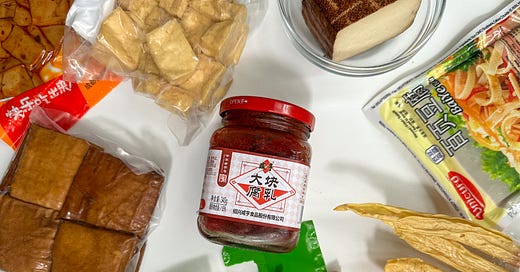


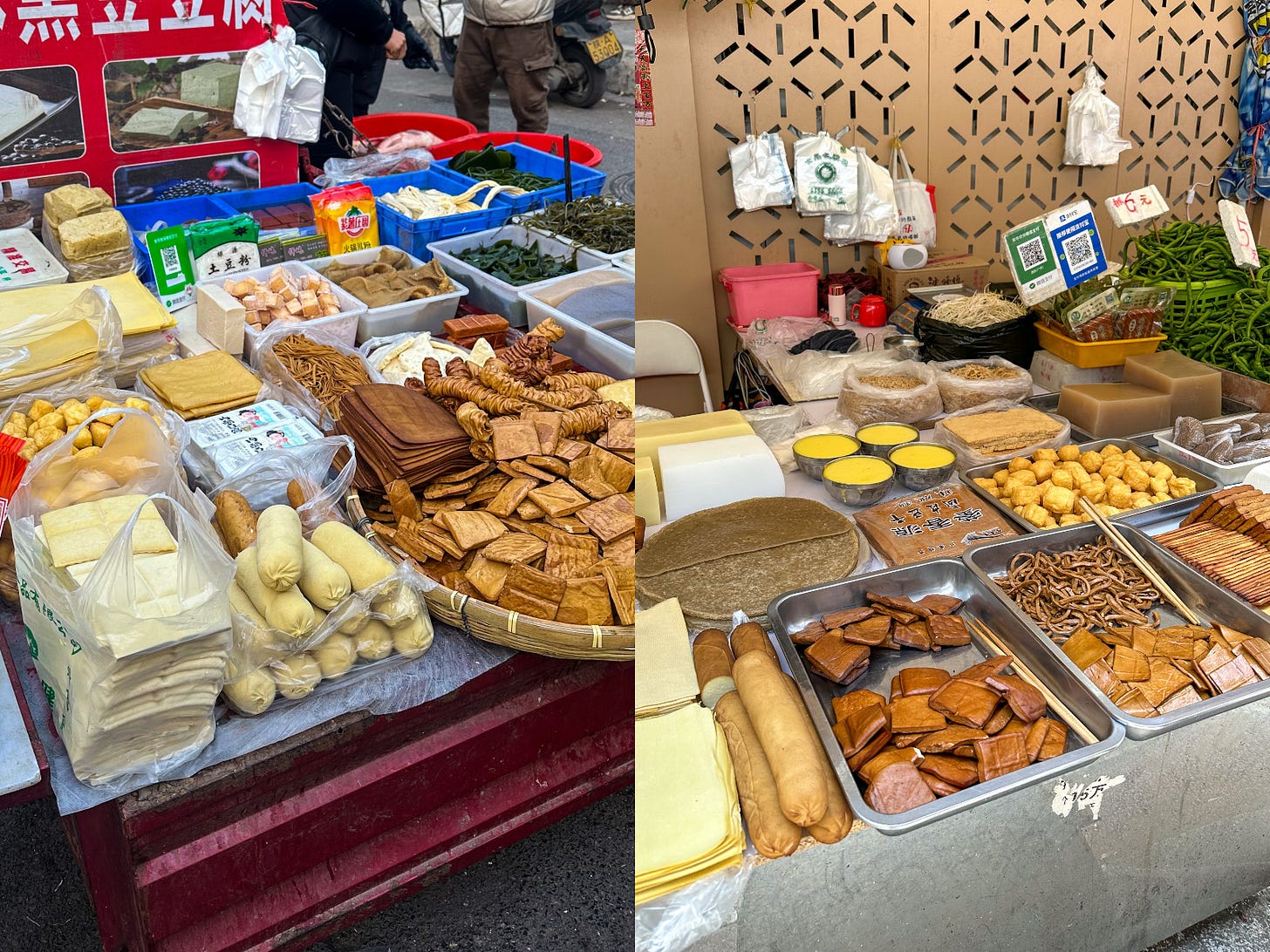

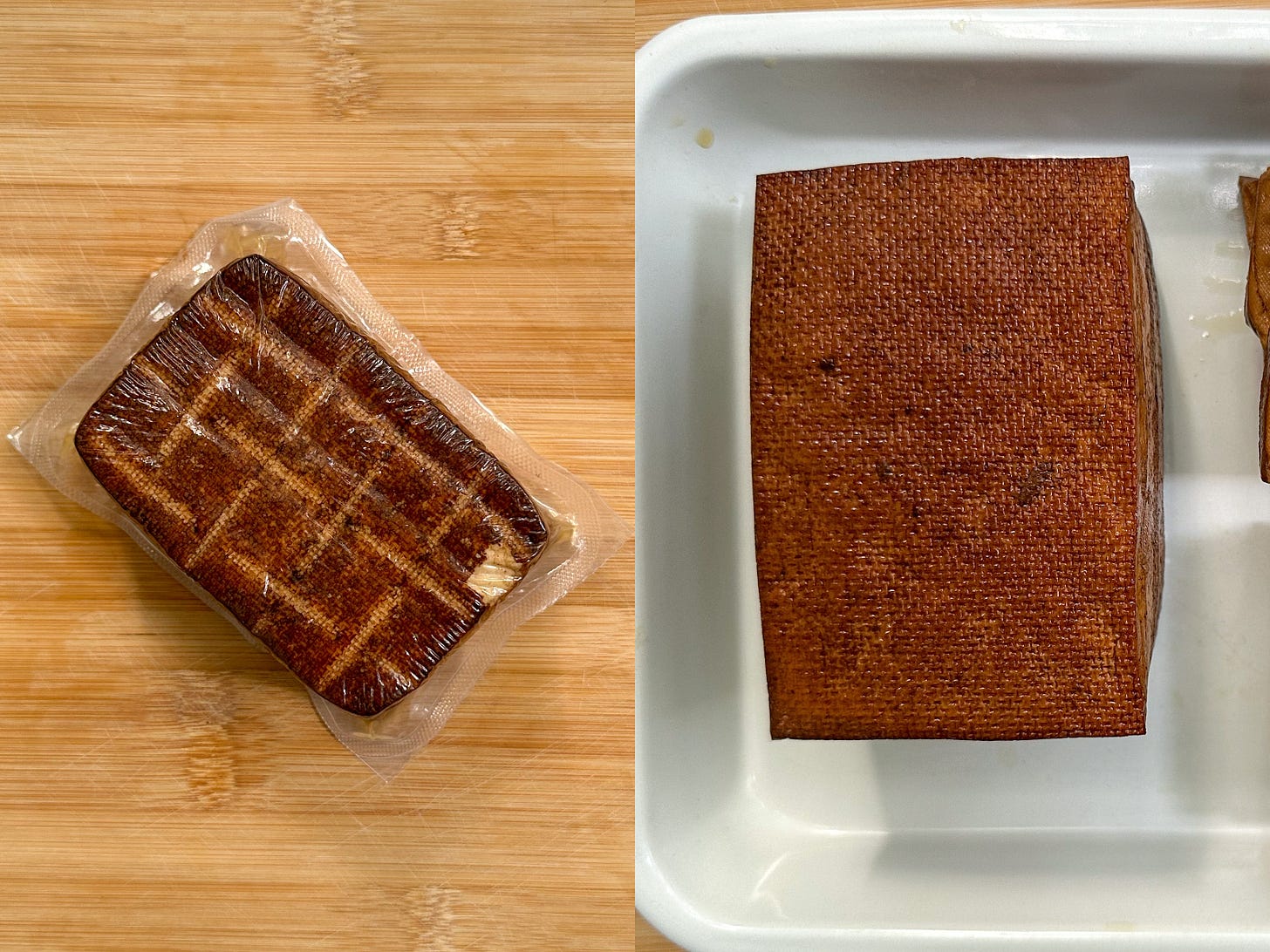
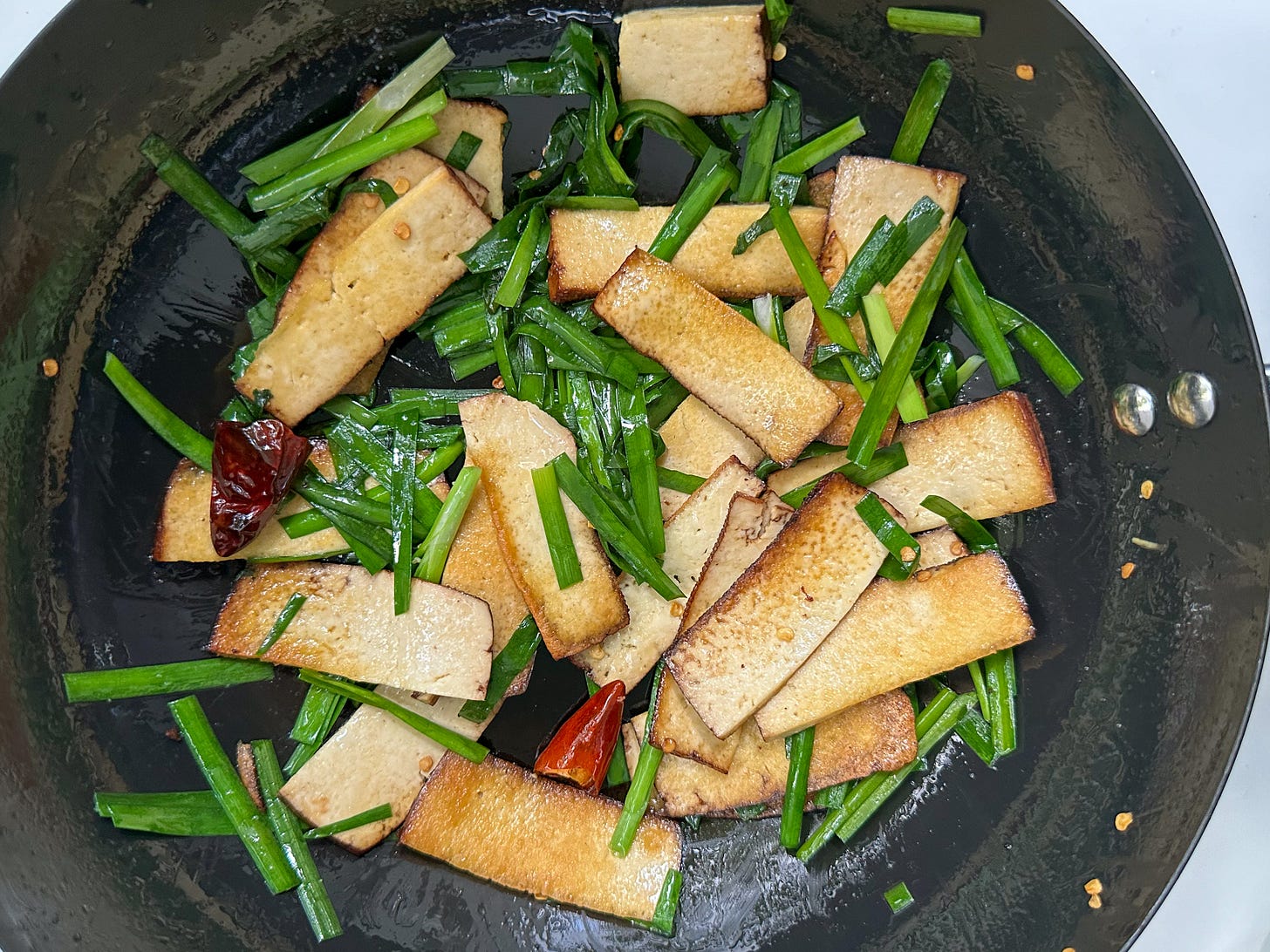
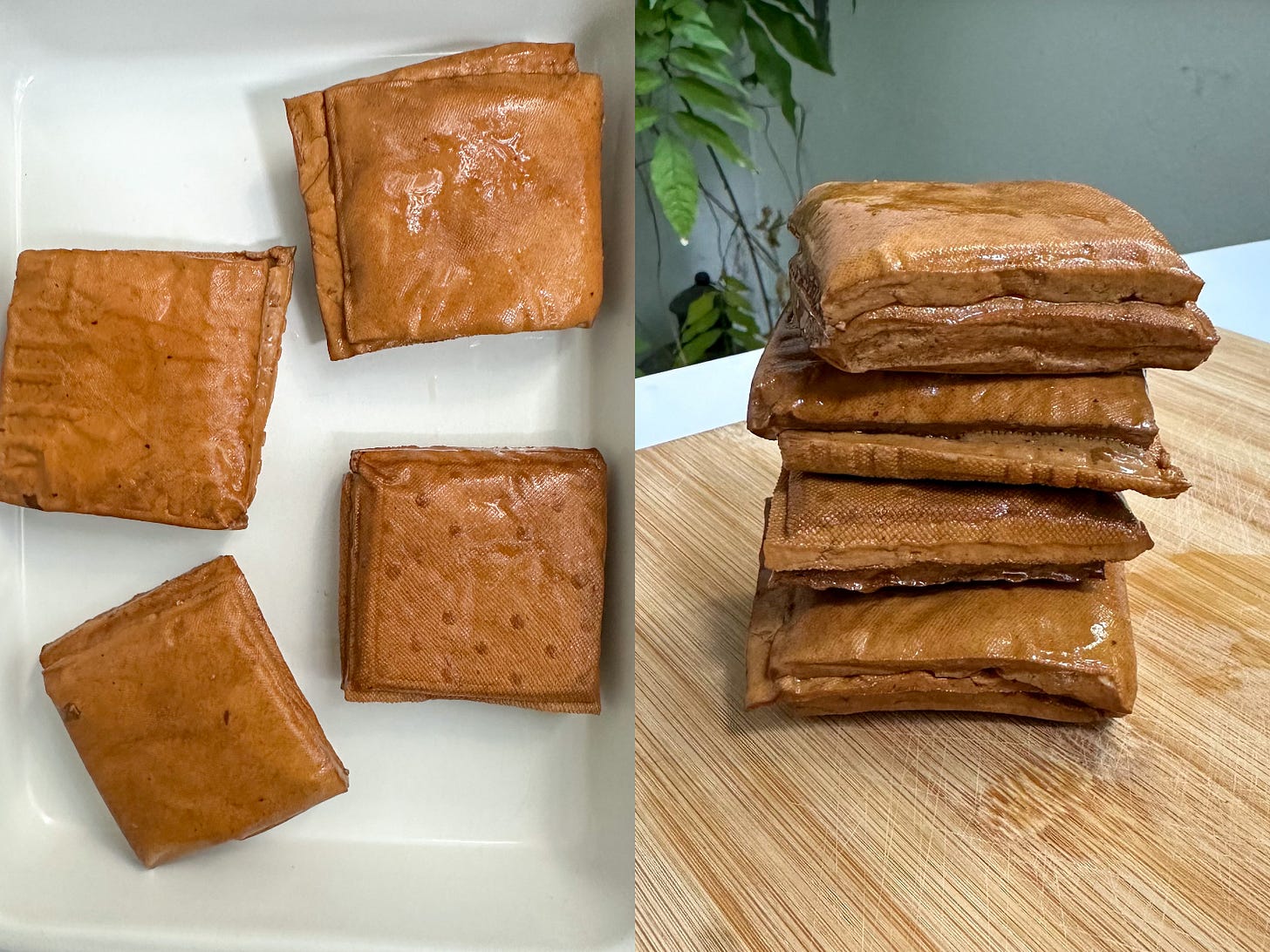
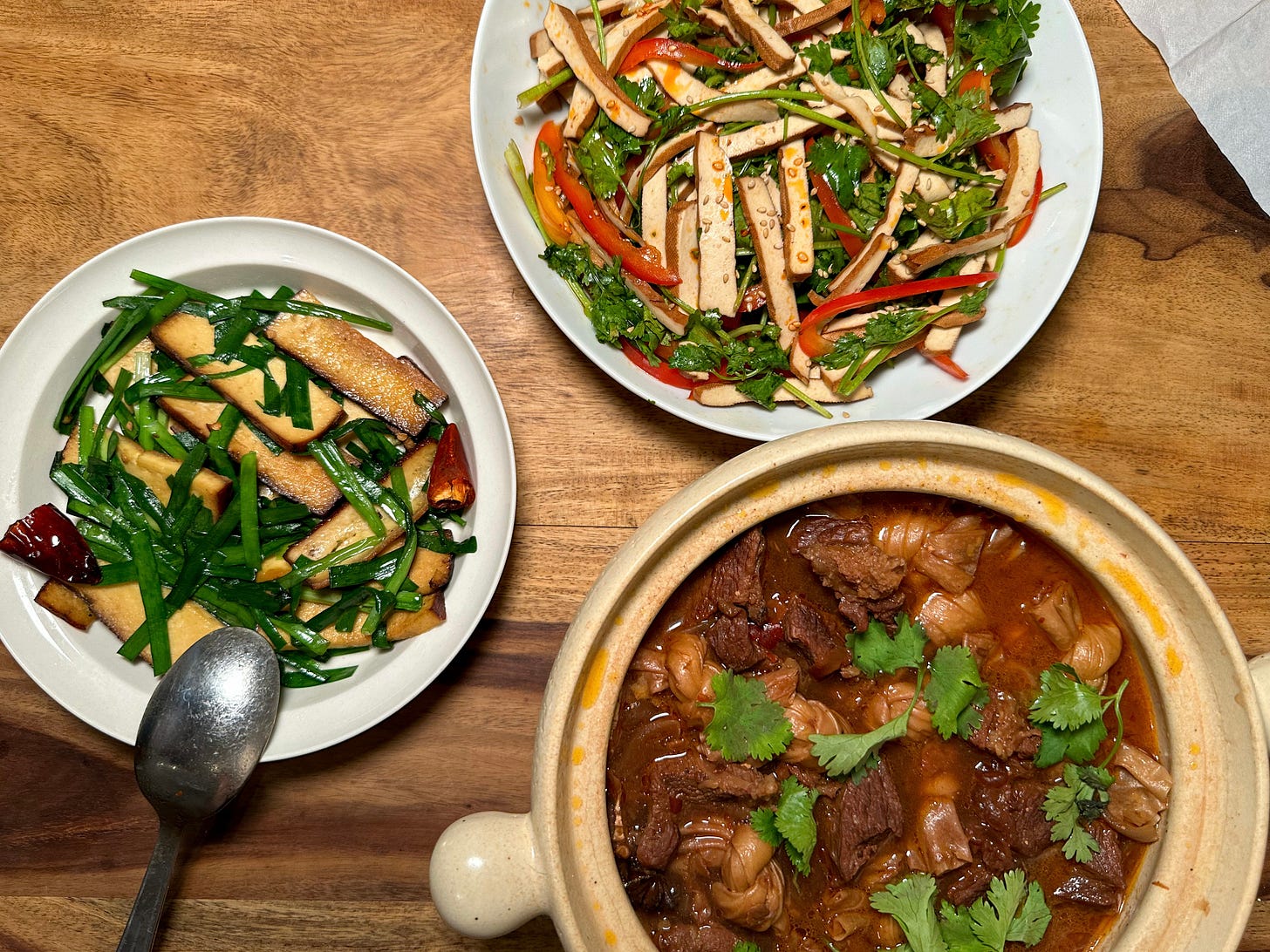
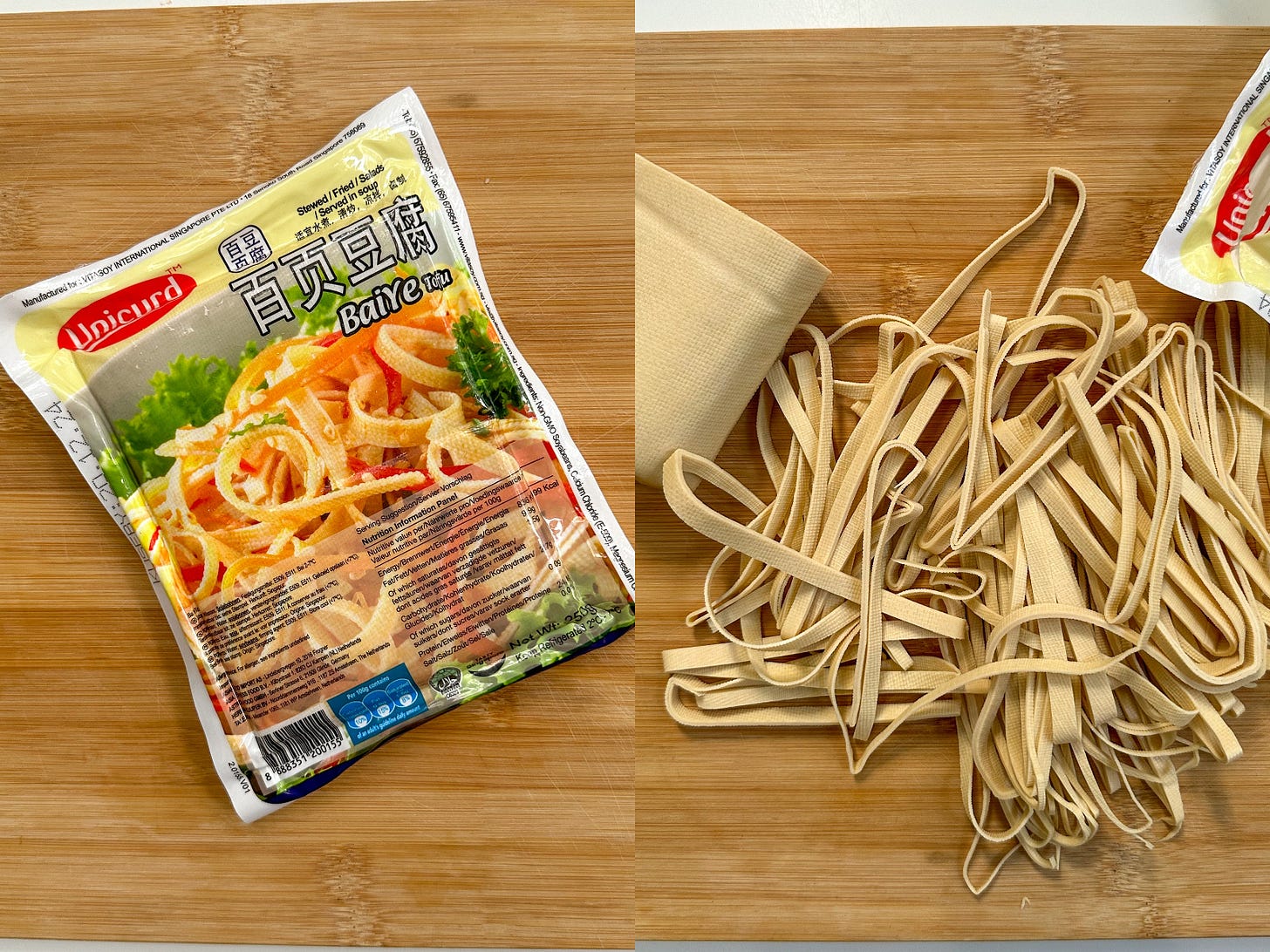
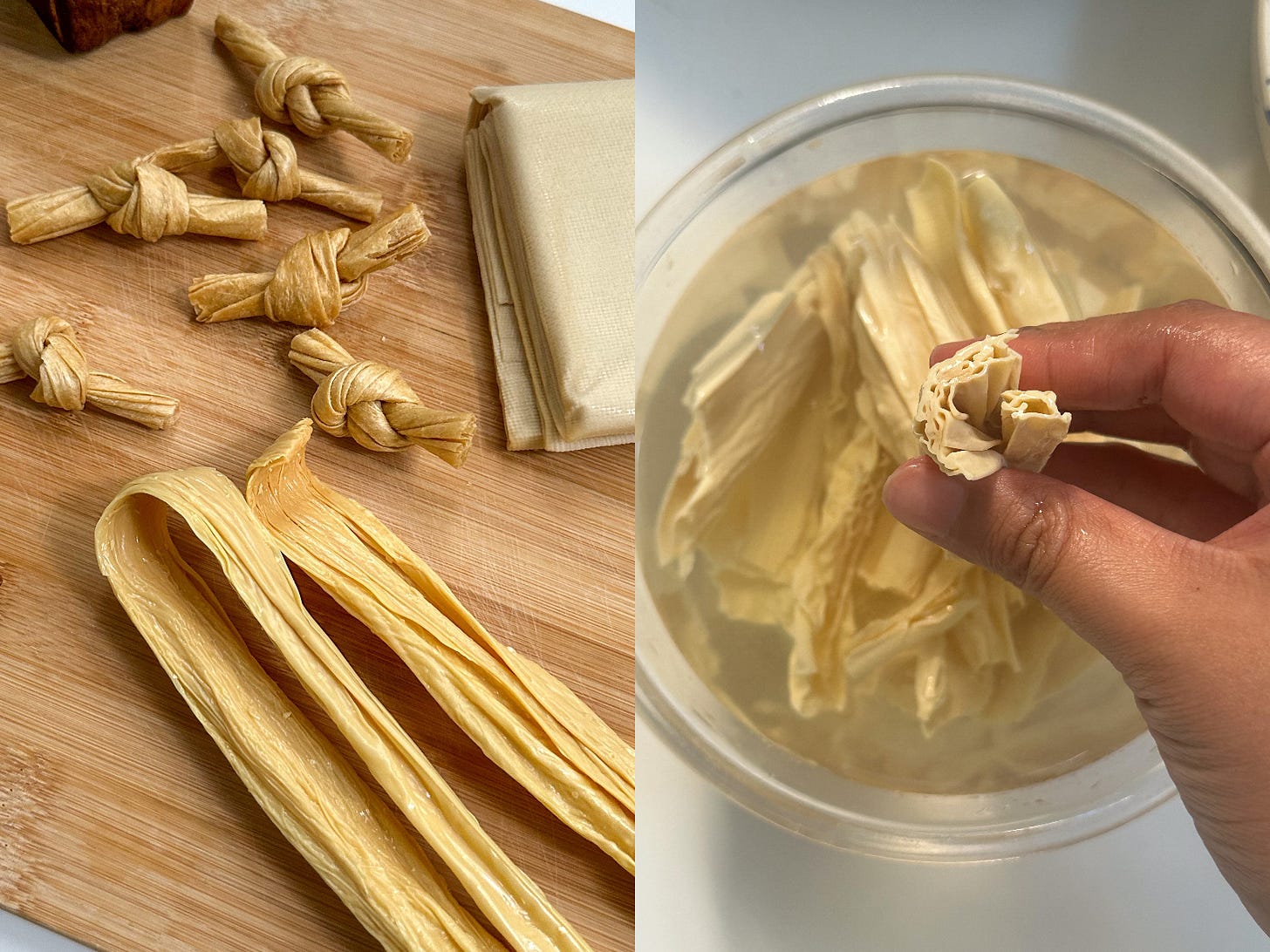

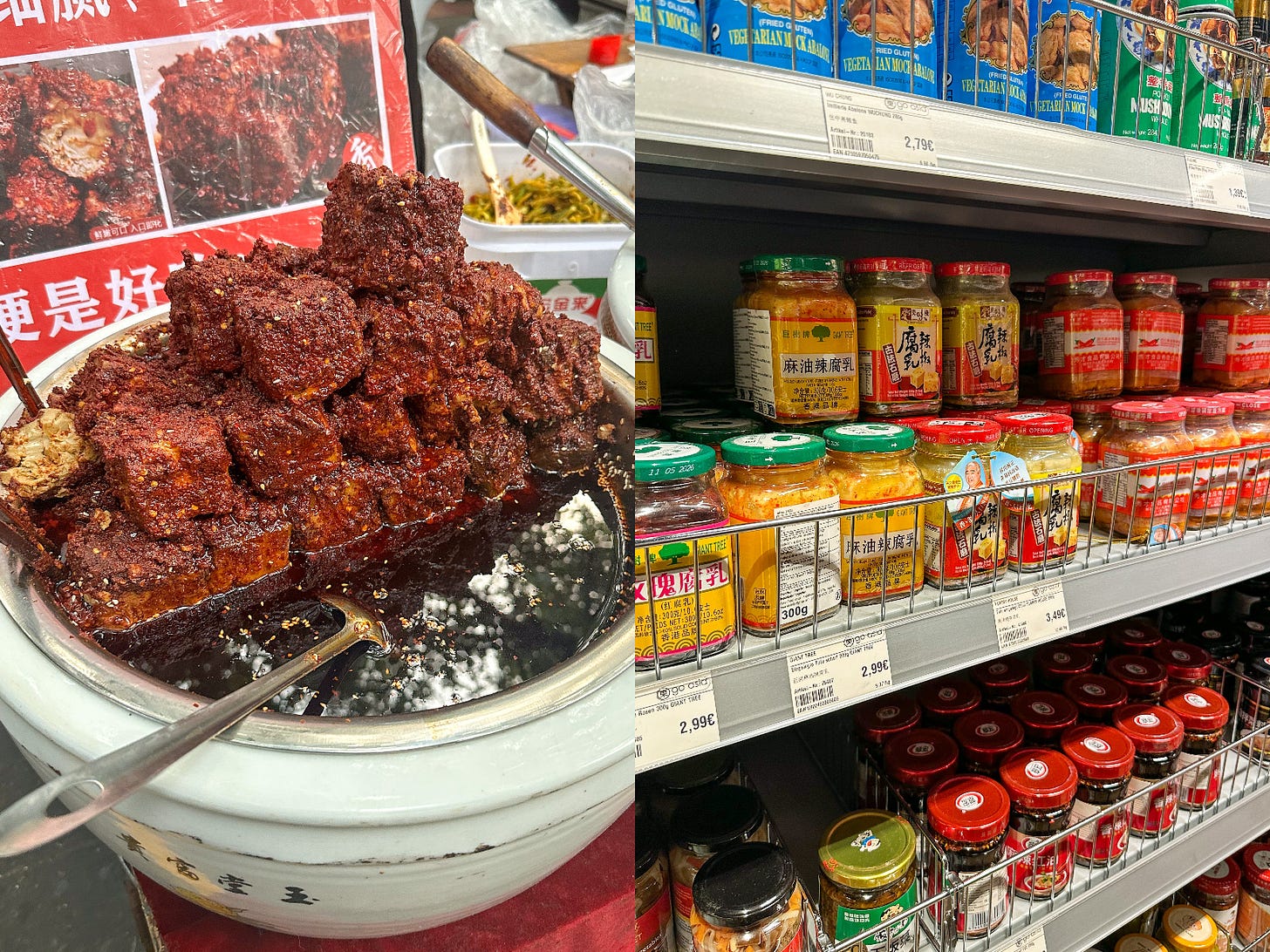
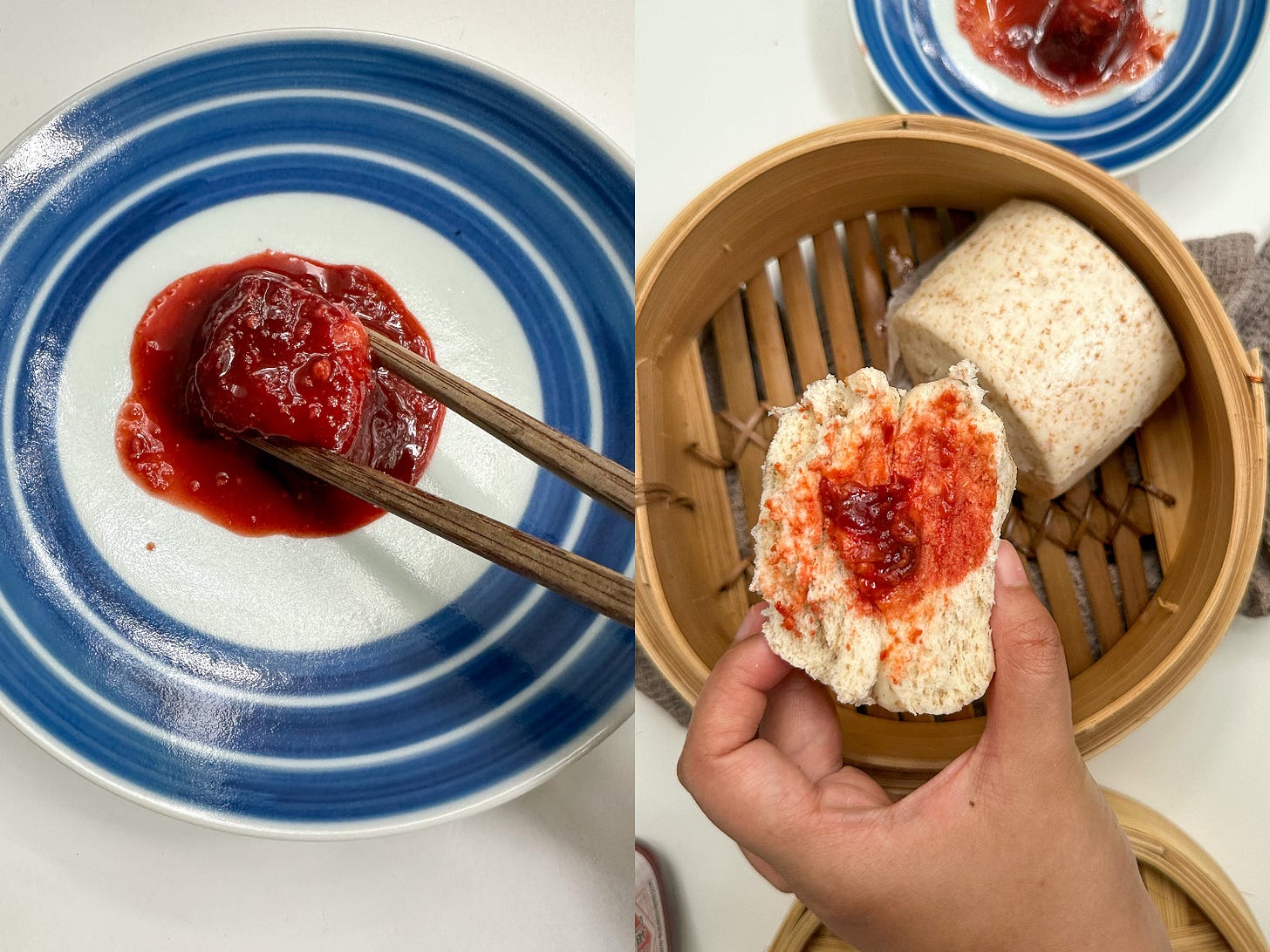
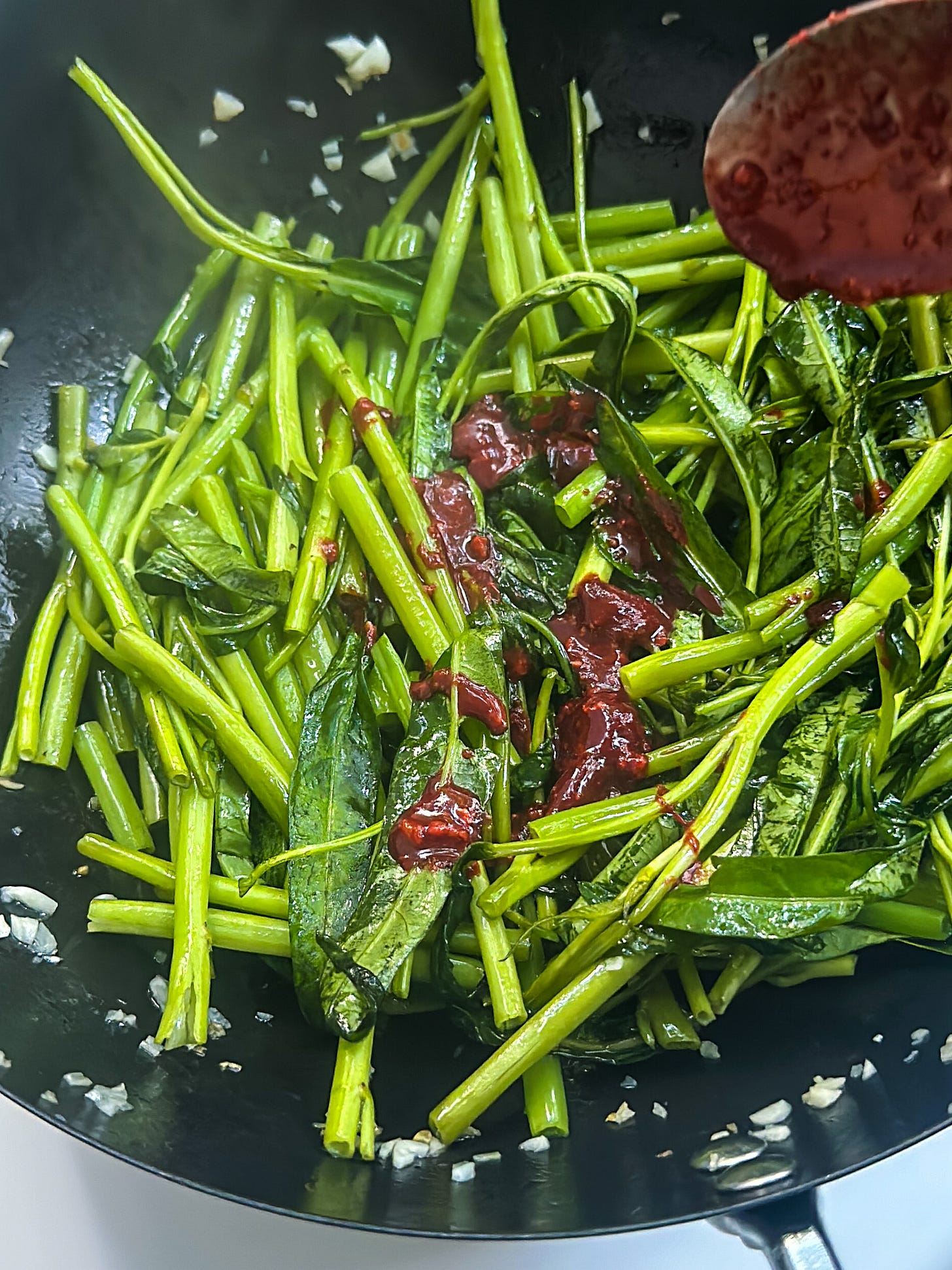
This run down has cracked open a whole new set of ingredients and techniques for me in a way that individual recipes never did. Thank you!!!